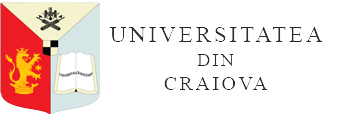SPECIAL MARKETS FOR LOCAL AGRO FOOD PRODUCTS
DOI:
https://doi.org/10.52846/bihpt.v27i63.30Cuvinte cheie:
special markets, local agricultural products, local economy, local developmentRezumat
In recent years, the European Union's rural policies have focused on balanced rural development and, in particular, significant support for less-favored areas. This can be achieved through diversification strategies that focus on supporting and promoting local products in each region. The aim is to create synergies between local producers and various distributors to create and increase added value in the final local product. The importance of product quality has created a global trend in nutrition by helping to create a highly competitive food market. The quality and place of production aspect is a unique asset for maintaining global competitiveness. Consumers, in recent years, are increasingly interested in the origin of food not only for health reasons but also for an internal need to satisfy the lack of "original" and "traditional" flavors and flavors of their daily lives (Theodossiou, Goulas, Duquenne, 2017) and secondarily to support the protection of the environment and the conservation of biodiversity at the place of production.
The global trend that has prevailed around the standardization of agricultural products has created an alternative trend of valuing and consuming typical products of an area. In these typical products, social participation and their quality are considered to enhance economic activity and can be a competitive advantage in domestic and international markets (Goodman 2003; Bowen & Mutersbaugh, 2014).
Concerns about the environmental, economic, social and health risks inherent in global food systems have attracted both public and scientific attention to sustainability and food security. In this way, it is considered that sustainable development of food systems will be achieved. Thus, in recent decades, an increasing number of people in high-income countries, mainly, have turned to "alternative food networks".
In the present research paper an attempt to study and present the categories of markets created by the global tendency of citizens to be interested in the origin and place of production of the food they consume will be reviewed in the existing literature. Mainly, the inhabitants of the big urban centers show a special interest in the way and the place of production of their food. Thus, the creation of various citizen movements was the expected development of this trend. In fact, according to Hinrichs (2000), specific citizen movements, such as Socially Supported Agriculture and Community-Based Agricultural Production have conquered many countries in Europe, America and Asia. However, in addition to these, the international literature mentions other markets of agricultural products, such as urban agriculture, specific and specialized delicatessens on agro - products, as well as short food supply chains.


